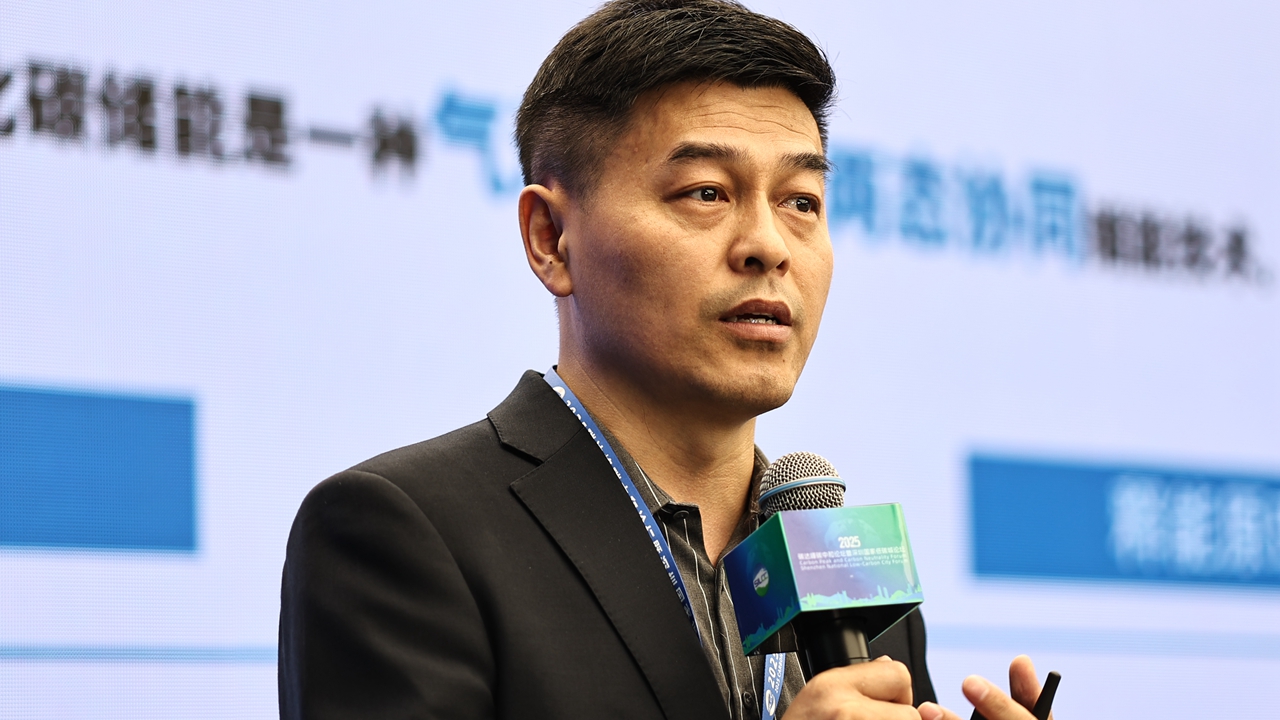Exax Energy showcases breakthrough energy storage technology at forum
Writer: Windy Shao | Editor: Zhang Chanwen | From: Original | Updated: 2025-11-05
At the roadshow session of the Shenzhen Low-Carbon City Forum in Longgang District on Oct. 29, Zou Guohai, marketing director of Exax Energy Tech, presented the company’s compressed carbon dioxide (CO₂) energy storage project, highlighting its advantages in safety, cost efficiency, and long-duration storage compared with mainstream electrochemical storage technologies such as lithium batteries.
According to Zou, the company’s gas-liquid phase change CO₂ storage system aligns with China’s and global efforts to reduce carbon emissions by utilizing captured CO₂ from industrial sources like cement plants and thermal power stations. “Our system not only stores energy but also contributes to carbon sequestration,” he said. “Unlike electrochemical storage, CO₂ is an inert gas, non-flammable, and non-explosive, ensuring an exceptionally high level of safety.”
The storage process involves compressing CO₂ into a medium-pressure liquid state at around 7MPa and 23°C, making it stable and secure. This enables efficient long-term storage. Currently, Exax’s system achieves 40% energy conversion efficiency, with plans to reach higher levels within five years through material innovation in collaboration with Xi’an Jiaotong University.

Zou Guohai, marketing director of Exax Energy Tech, presents the company’s compressed carbon dioxide (CO₂) energy storage project during the roadshow session of the Shenzhen Low-Carbon City Forum in Longgang District on Oct. 29. Liu Xudong
Zou emphasized that CO₂ energy storage holds a natural advantage for long-duration applications, capable of sustaining electricity output for 6–8 hours—far exceeding the current national average of 2.3 hours for energy storage systems. At a cement’s plant in Anhui Province, Exax’s project already enables the facility to store power overnight and release it during daytime operations, using renewable energy to maintain stable production.
He pointed out that the technology can also support grid balancing at large-scale renewable bases such as those in Xinjiang, helping smooth fluctuations caused by intermittent solar and wind power generation. “When clouds block sunlight or wind conditions change, our system can immediately release stored energy to stabilize the grid and reduce renewable energy curtailment,” Zou explained.
Reflecting on the roadshow experience, Zou praised the platform for bringing visibility to long-duration energy storage, an emerging but less understood segment of the industry. “Many people are familiar with battery storage, but not with systems like ours, which are not limited by geography or climate. The forum helps us raise awareness and promote consensus about the importance of long-duration storage for a low-carbon future,” he said.
Founded in 2021 and headquartered in Shenzhen, Exax Energy is a research-driven company with over 70 patents developed through years of collaboration with Xi’an Jiaotong University. Its R&D team makes up more than 70% of the staff, reflecting the company’s deep commitment to technological innovation.
Zou noted that Exax’s breakthroughs include new materials for gas containment—specifically, soft-membrane systems for CO₂ storage that ensure zero leakage and high safety. Such advances are paving the way for wider deployment in industrial and renewable settings.
Looking ahead, Zou believes CO₂ energy storage will play a vital role in China’s zero-carbon industrial park initiatives, key components of the country’s 15th Five-Year Plan. “Industrial parks account for 60–70% of urban electricity use. To build truly zero-carbon parks, stable and flexible energy storage is essential,” he said.
“As renewable energy becomes dominant, storage will no longer be optional—it will be a mandatory part of the clean energy system. CO₂-based long-duration storage will be indispensable for ensuring grid stability, maximizing the use of green power, and powering the next generation of sustainable industry.”